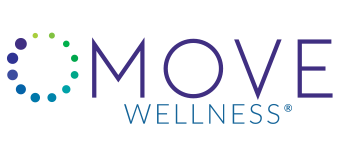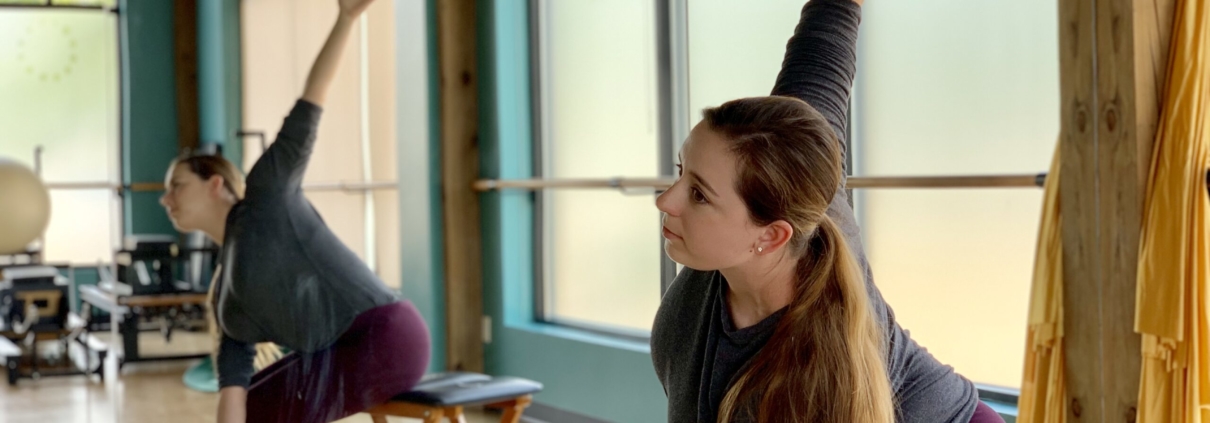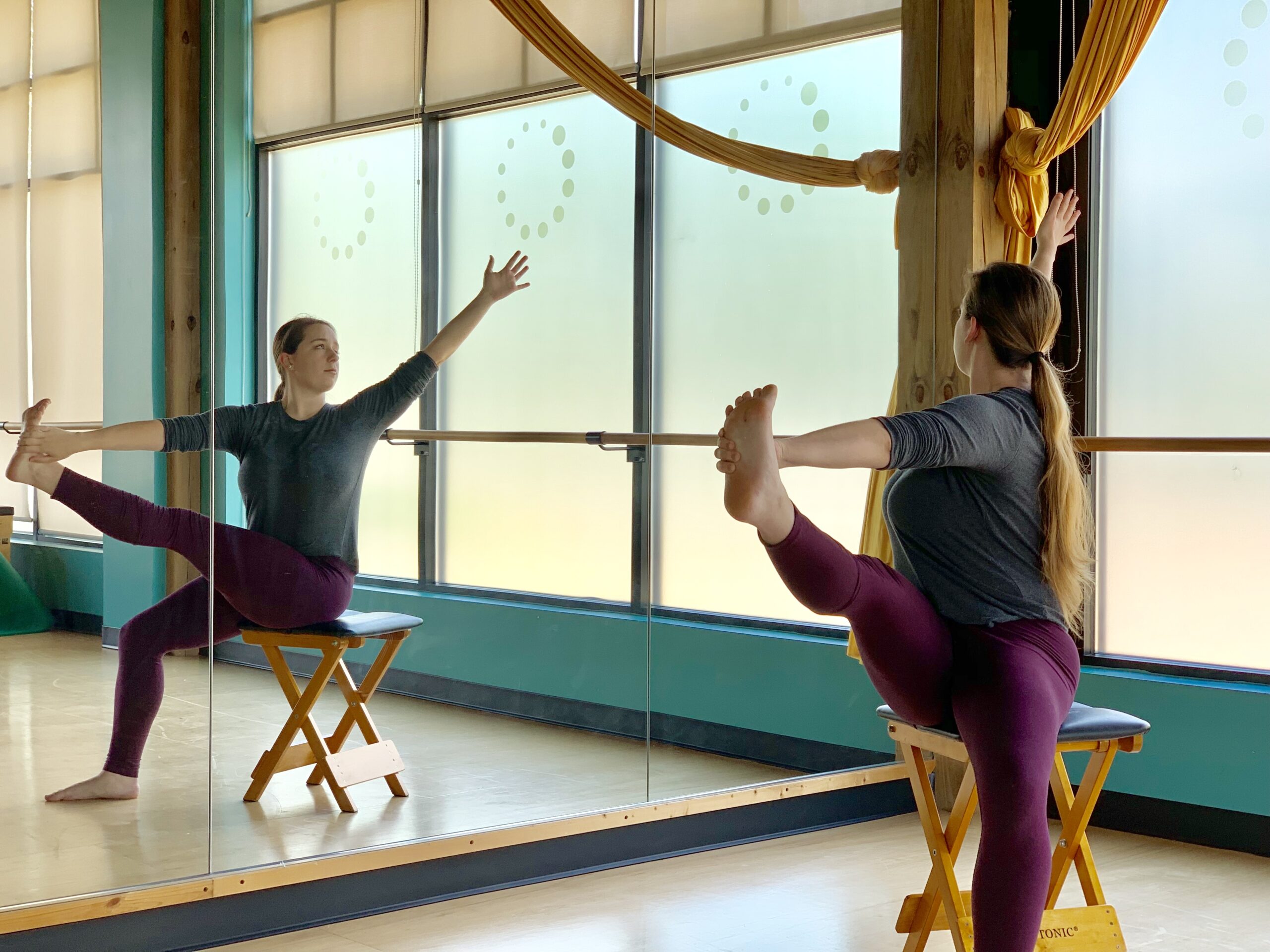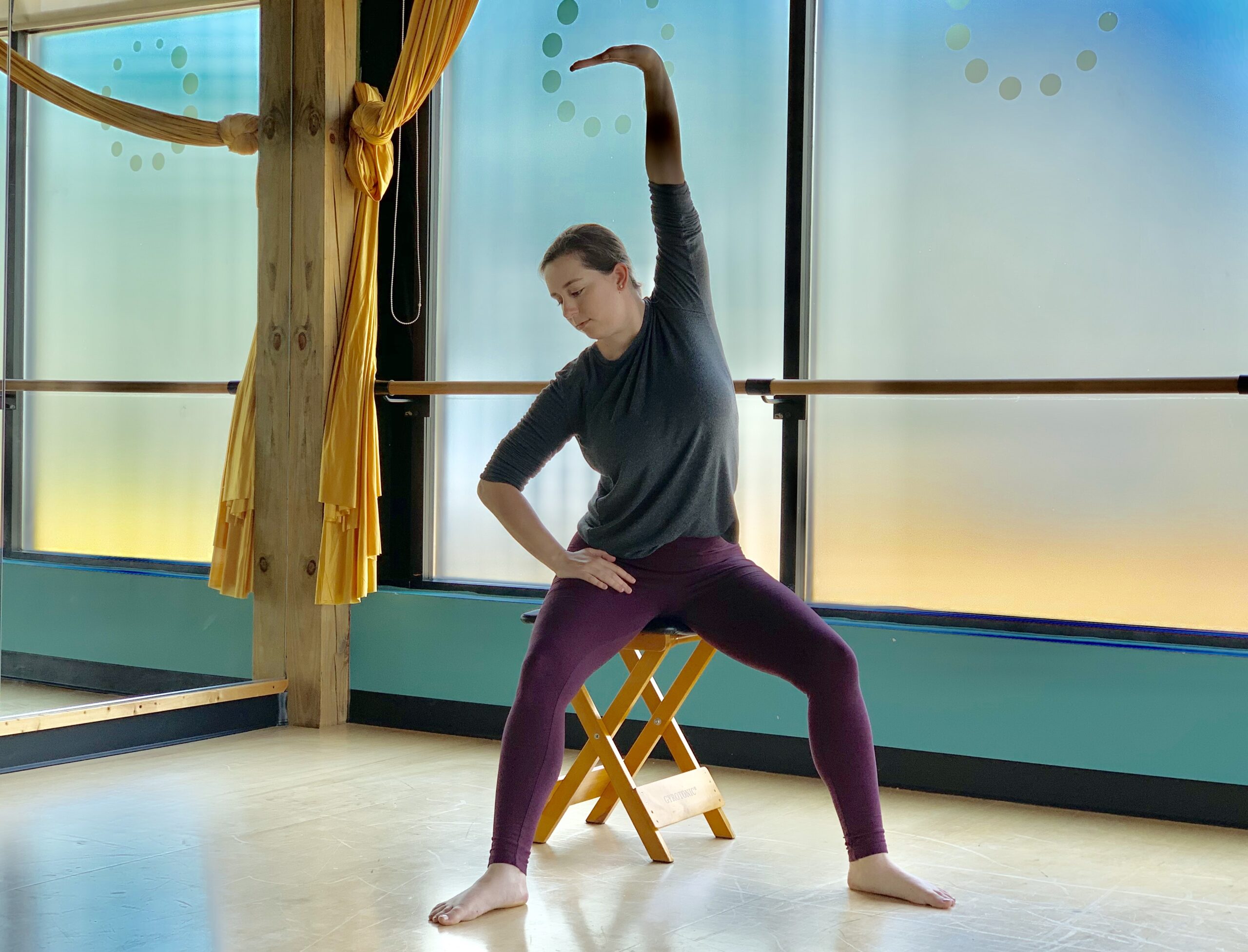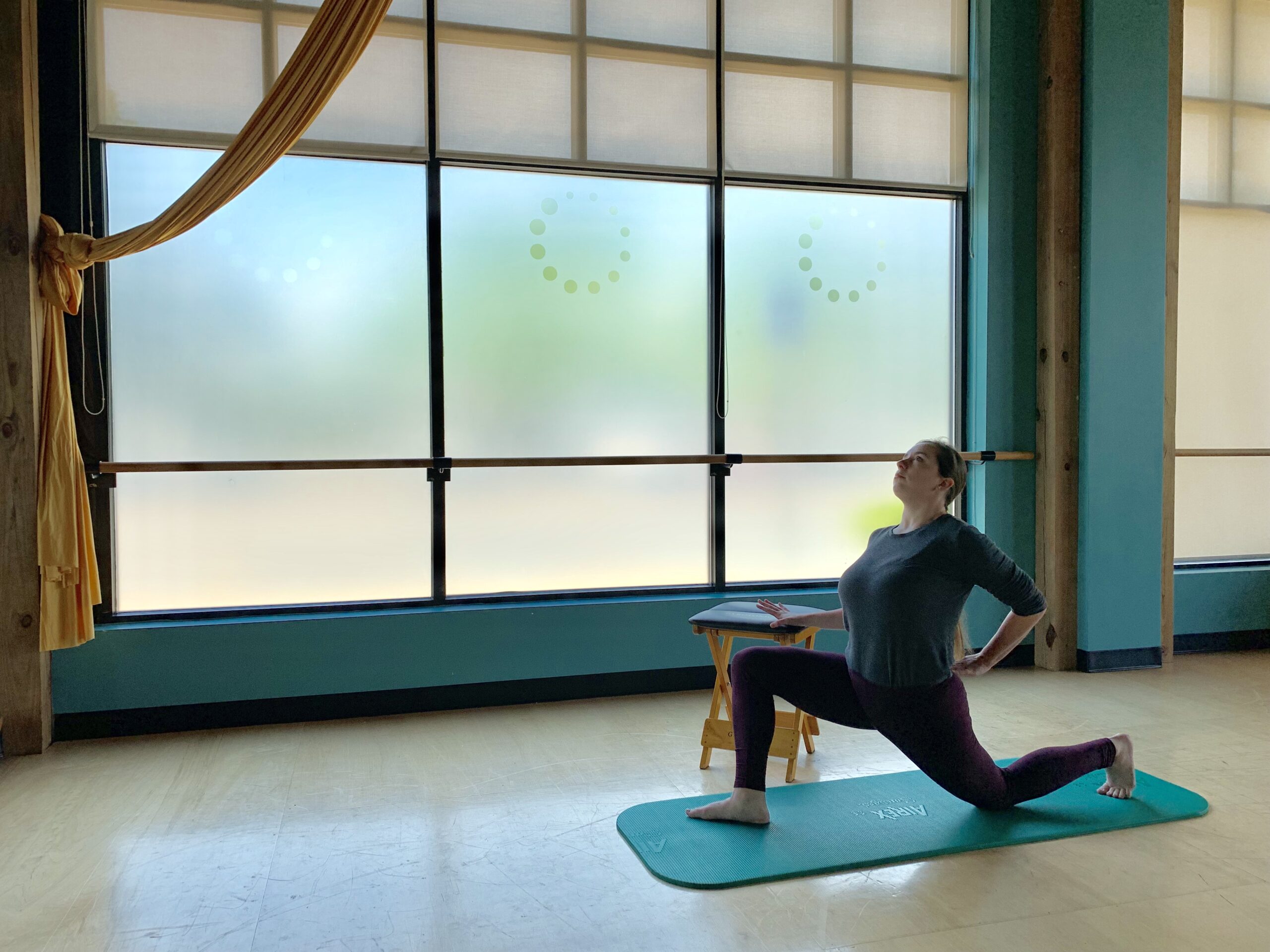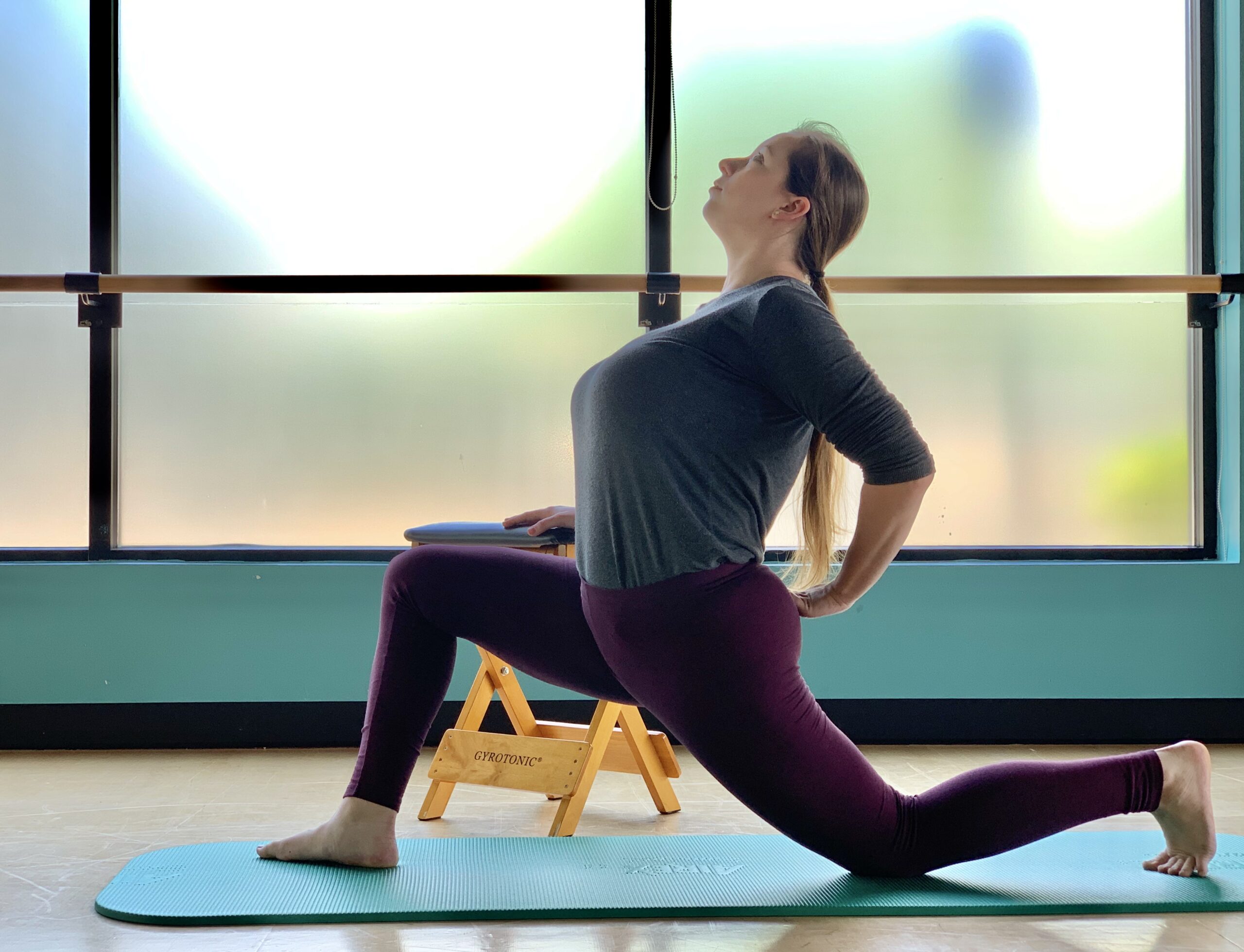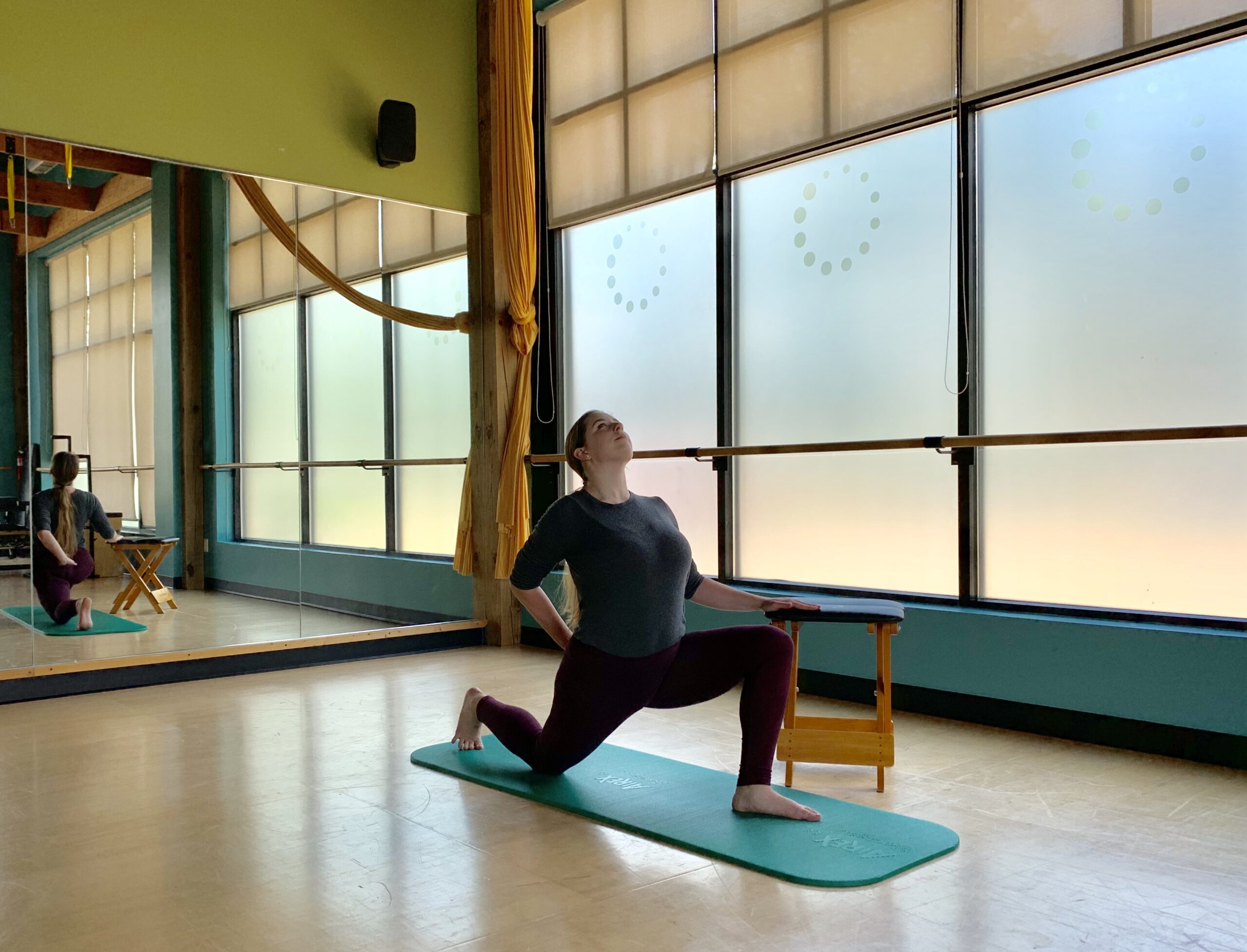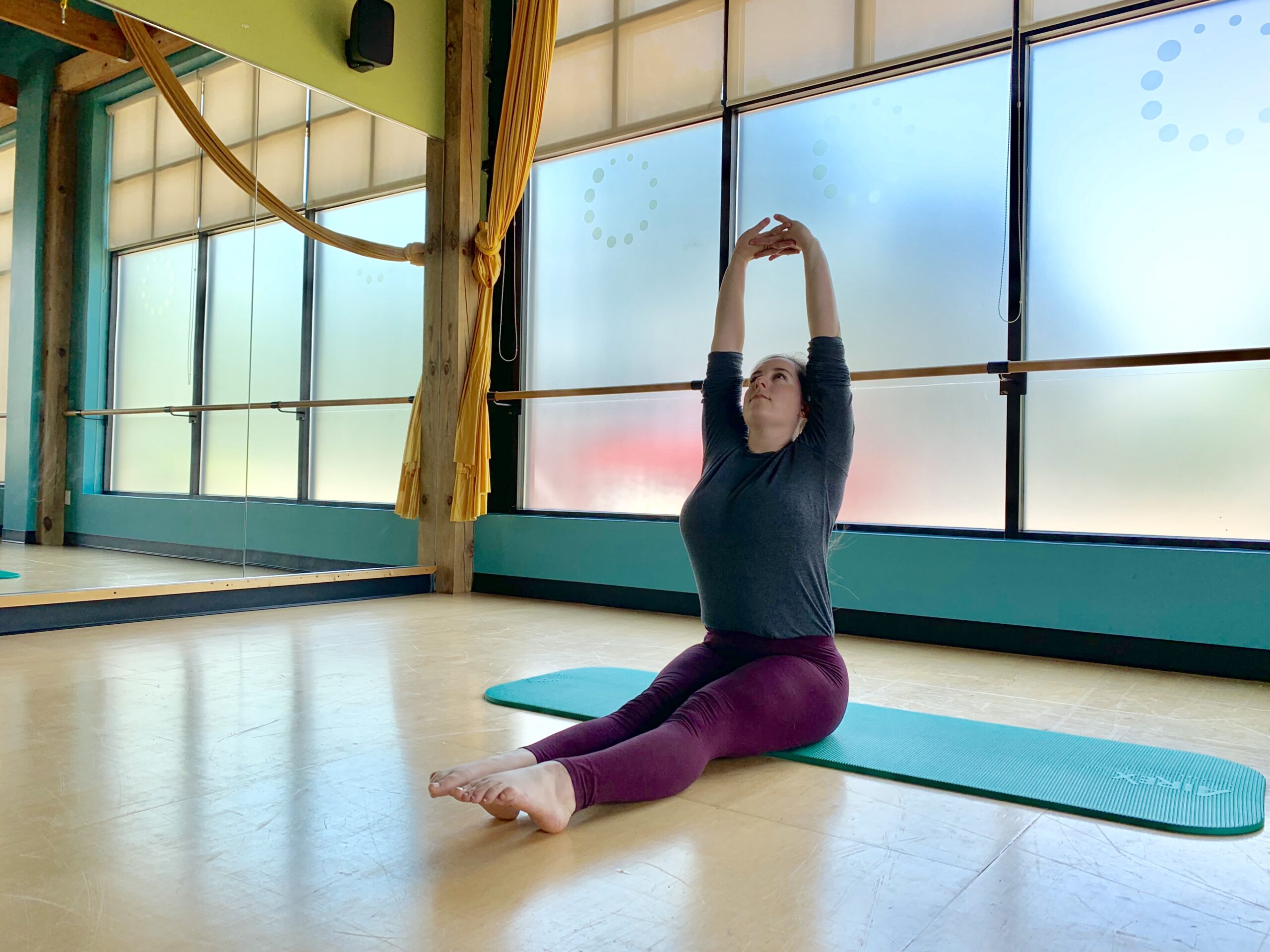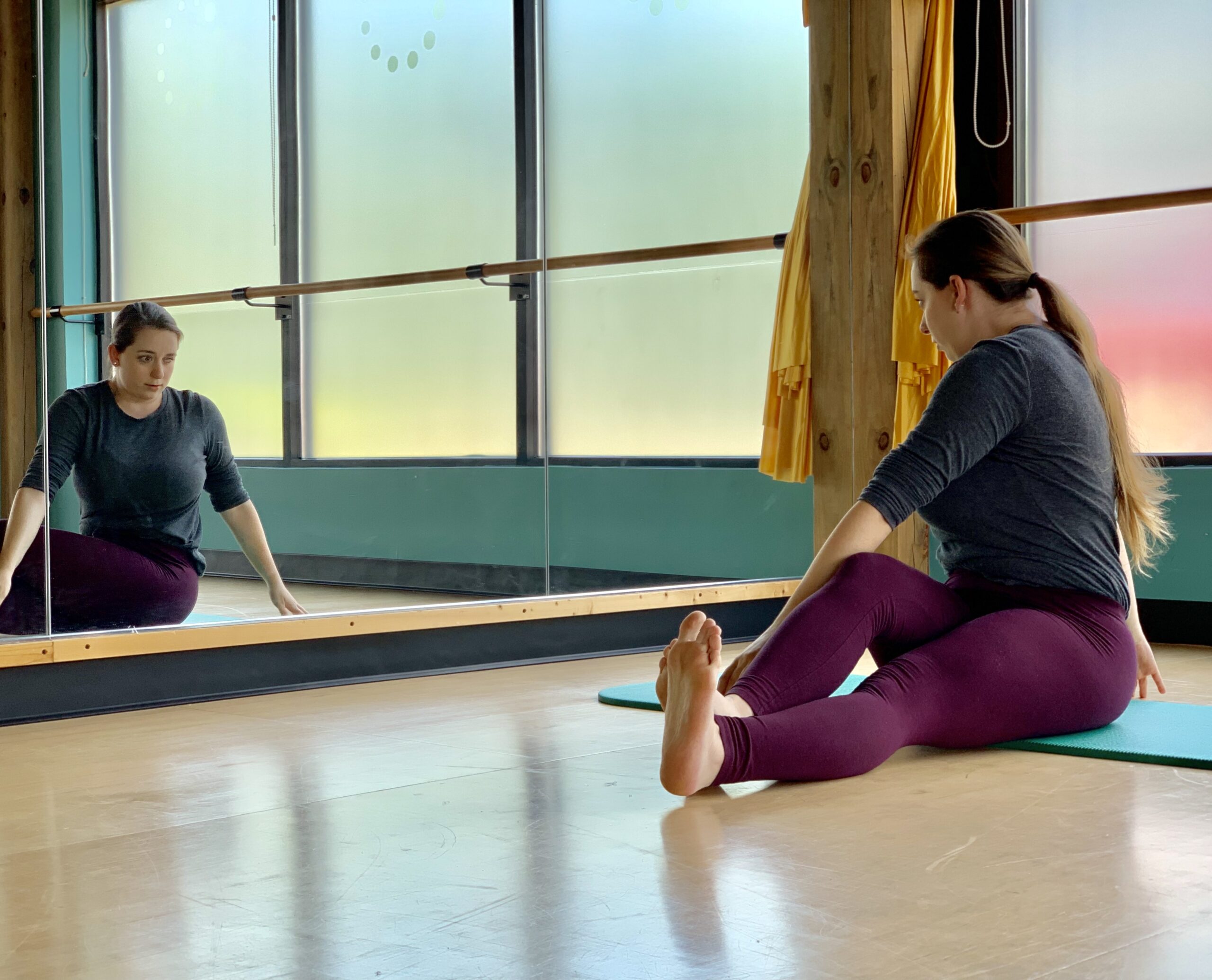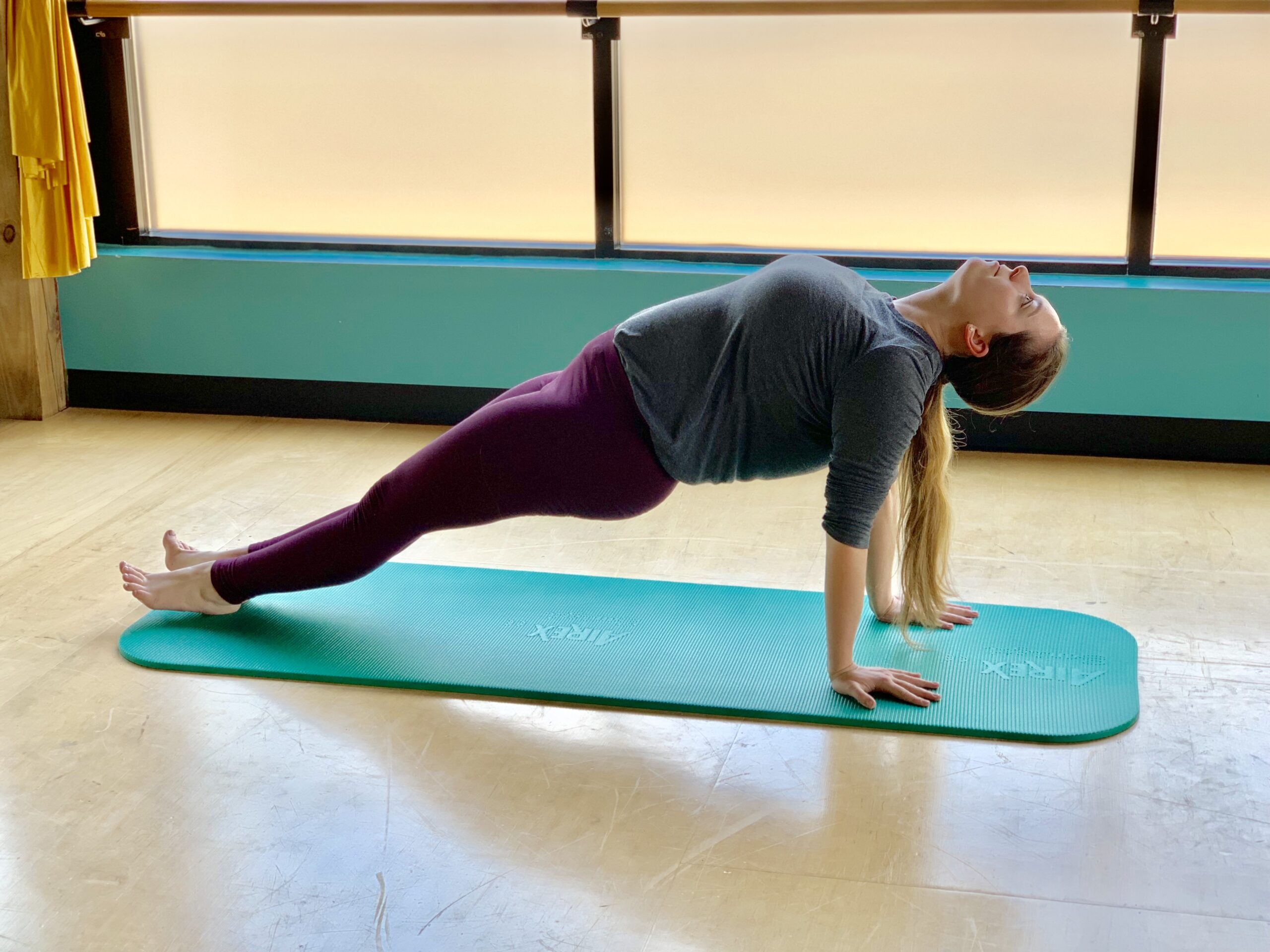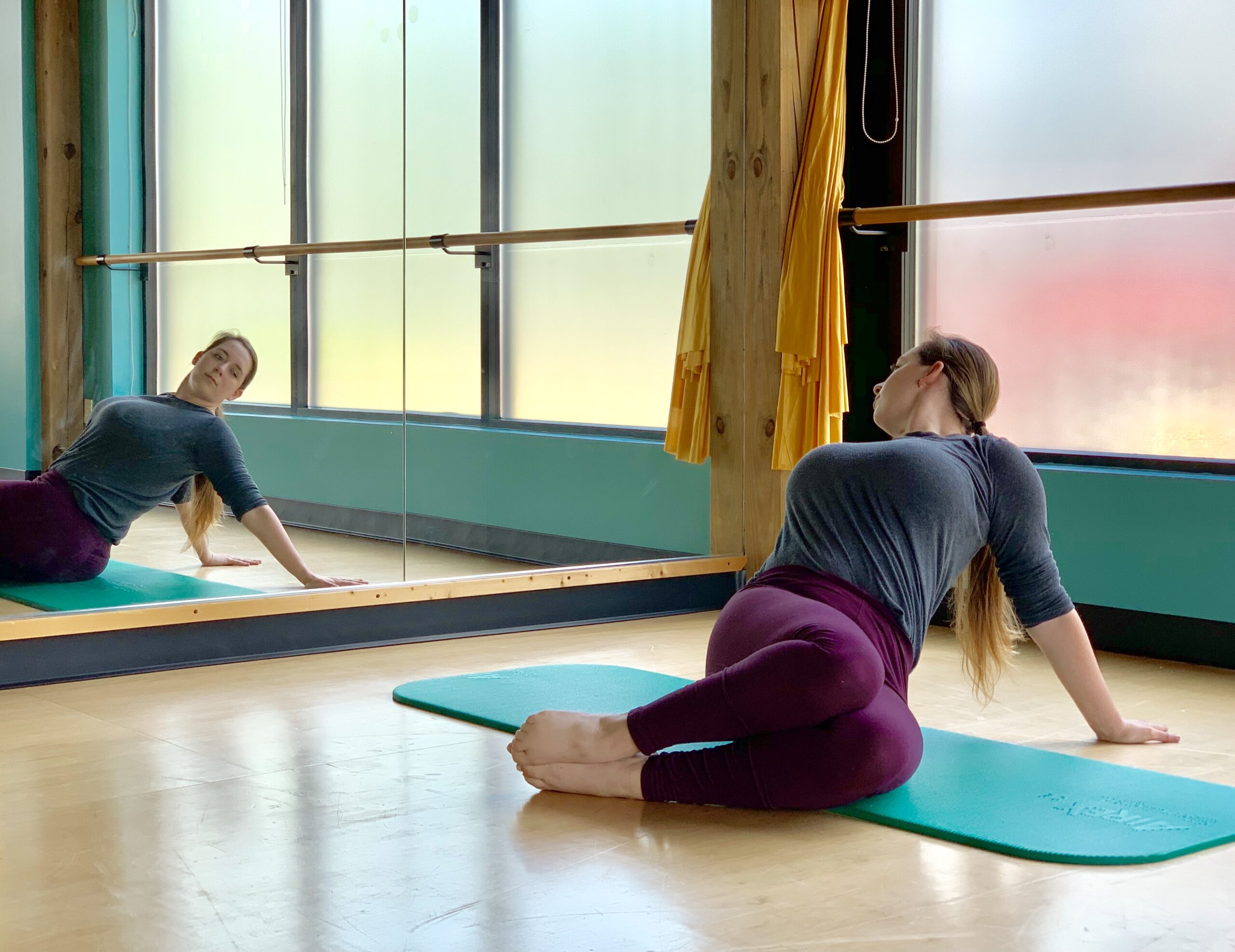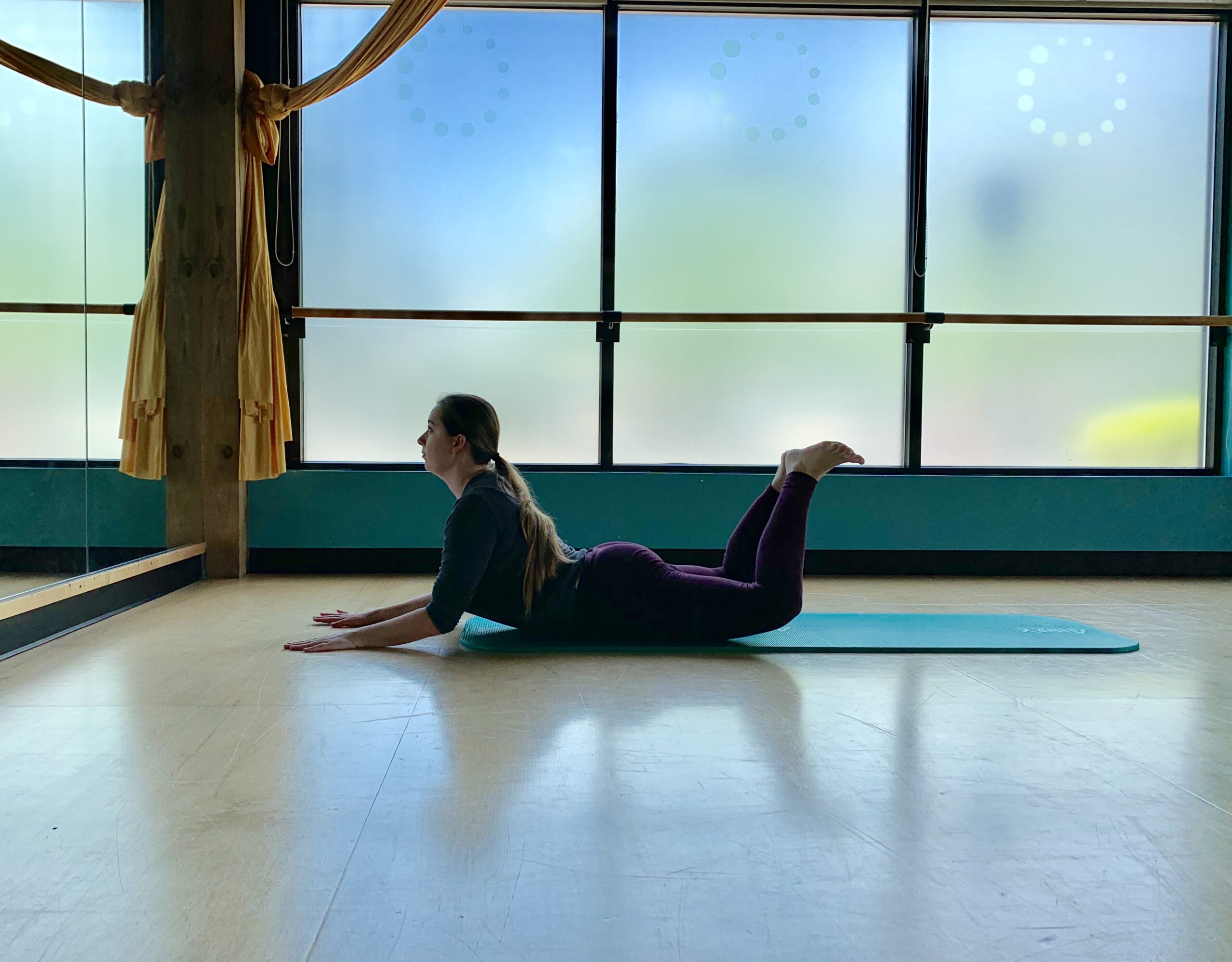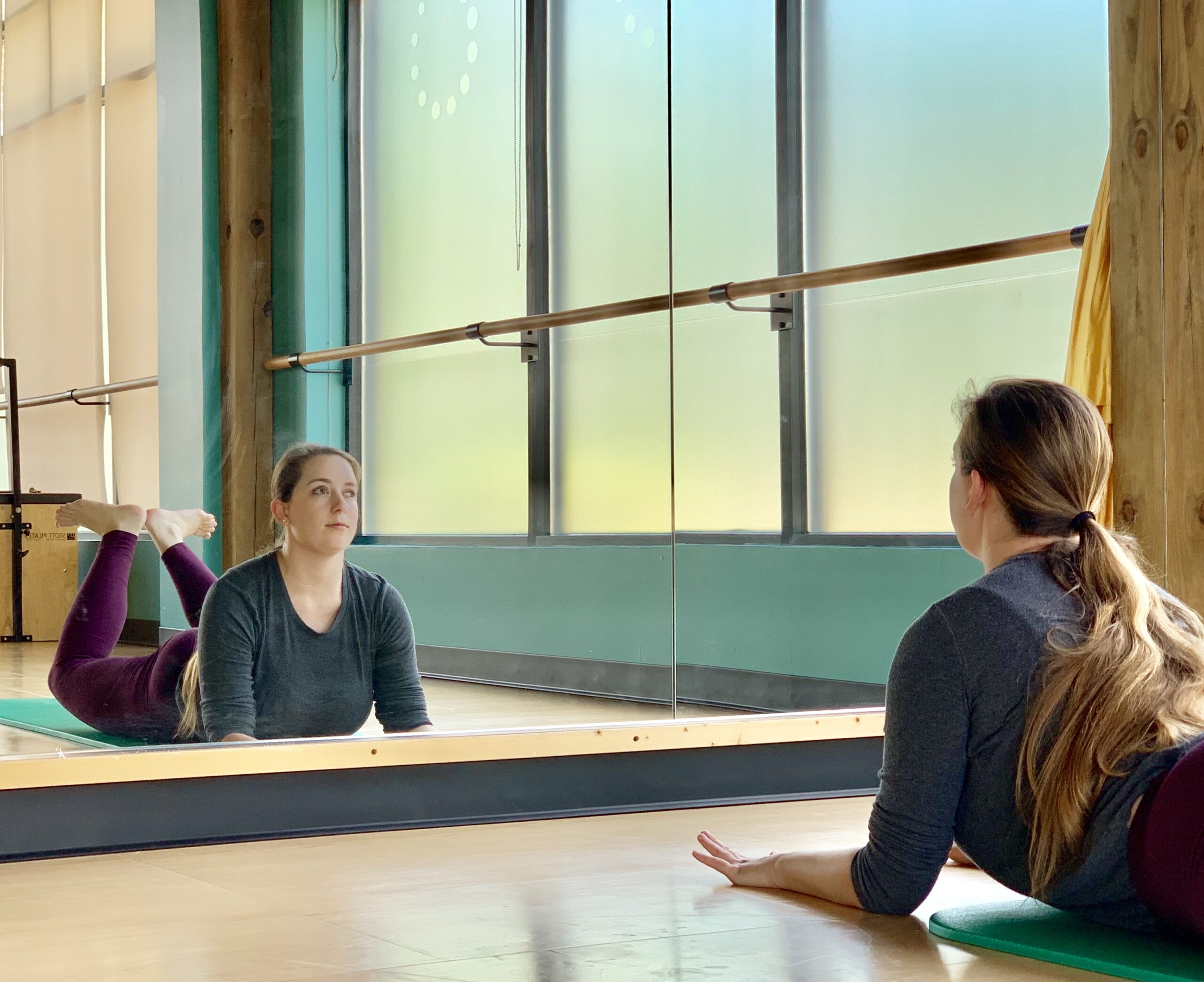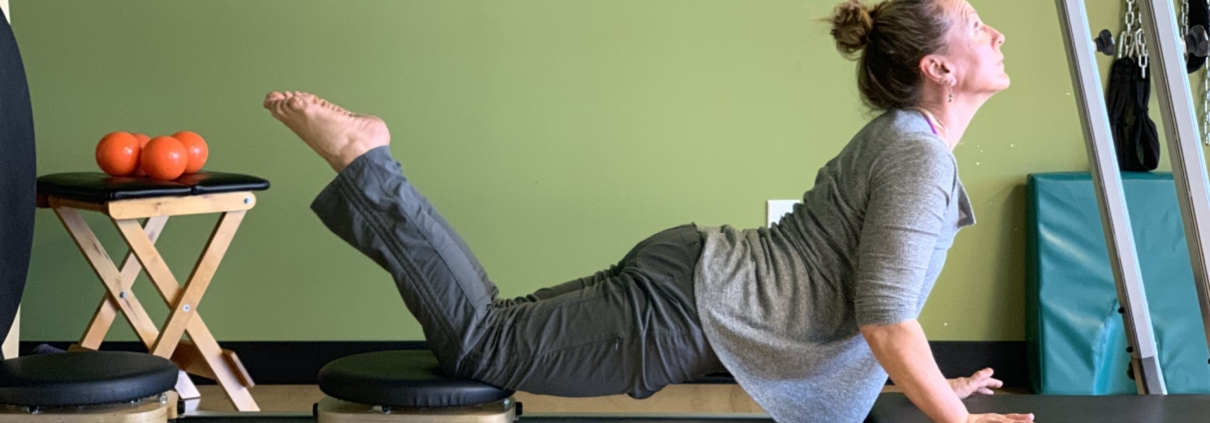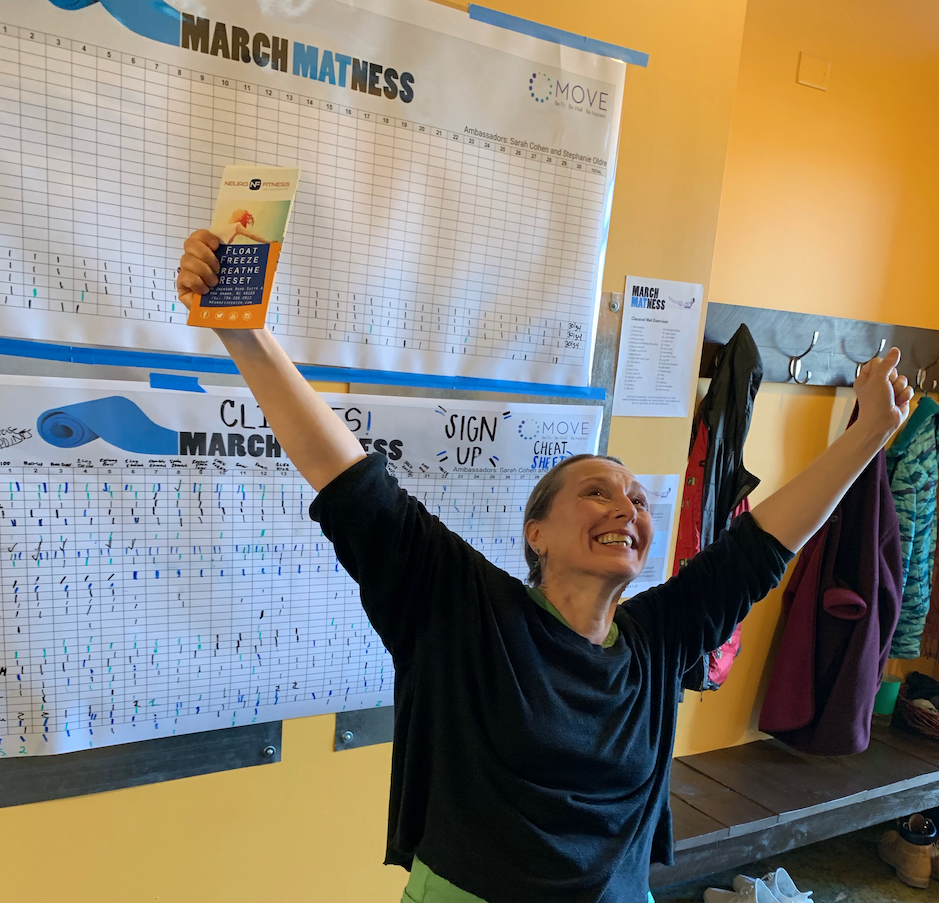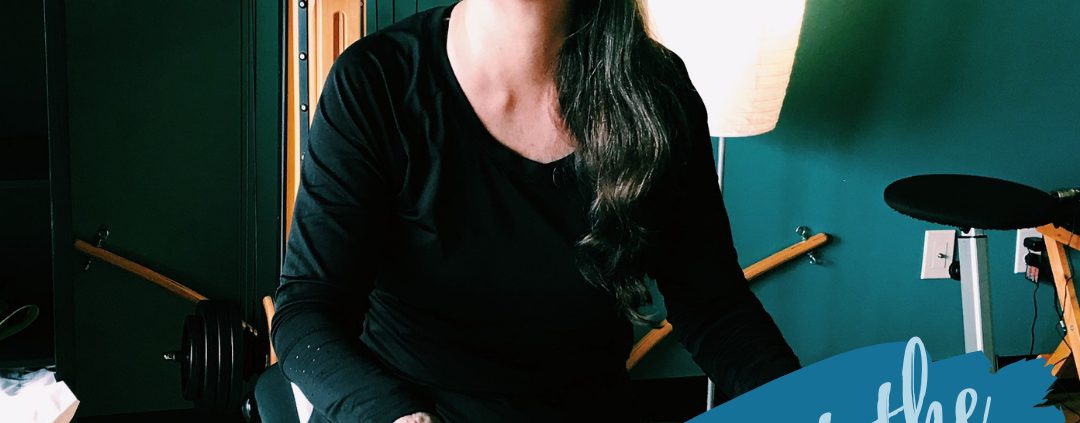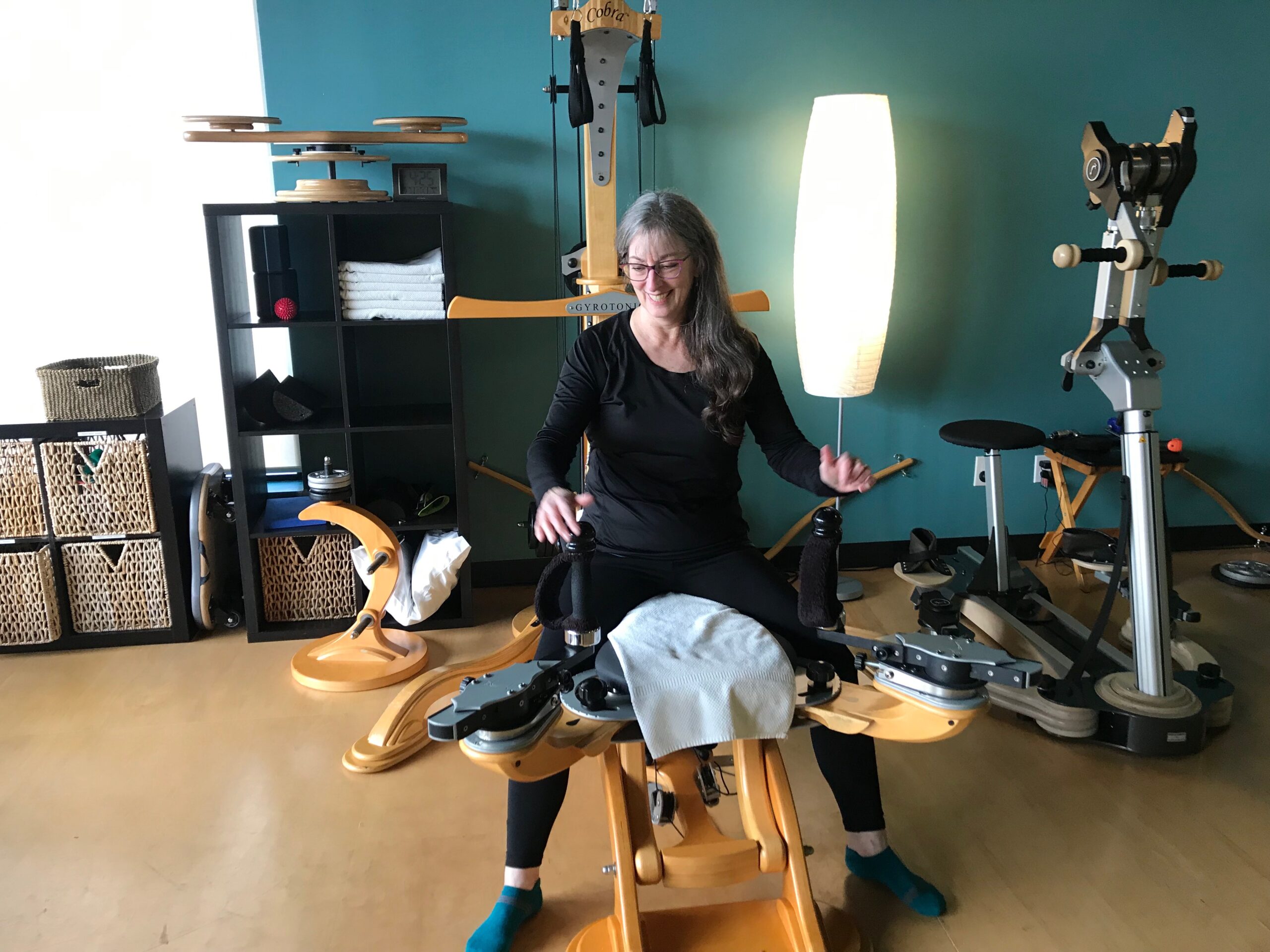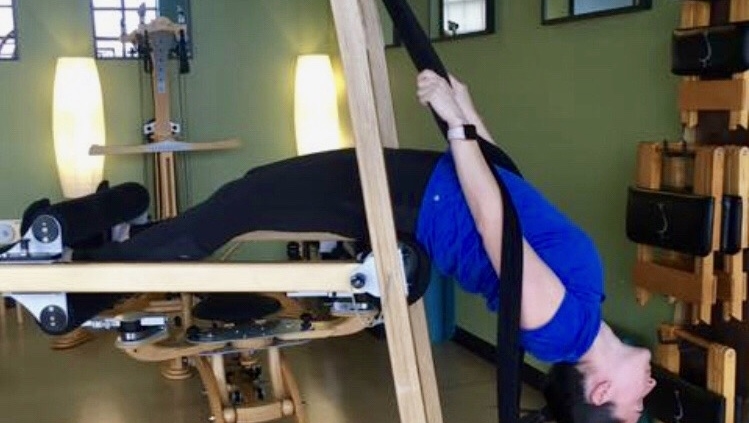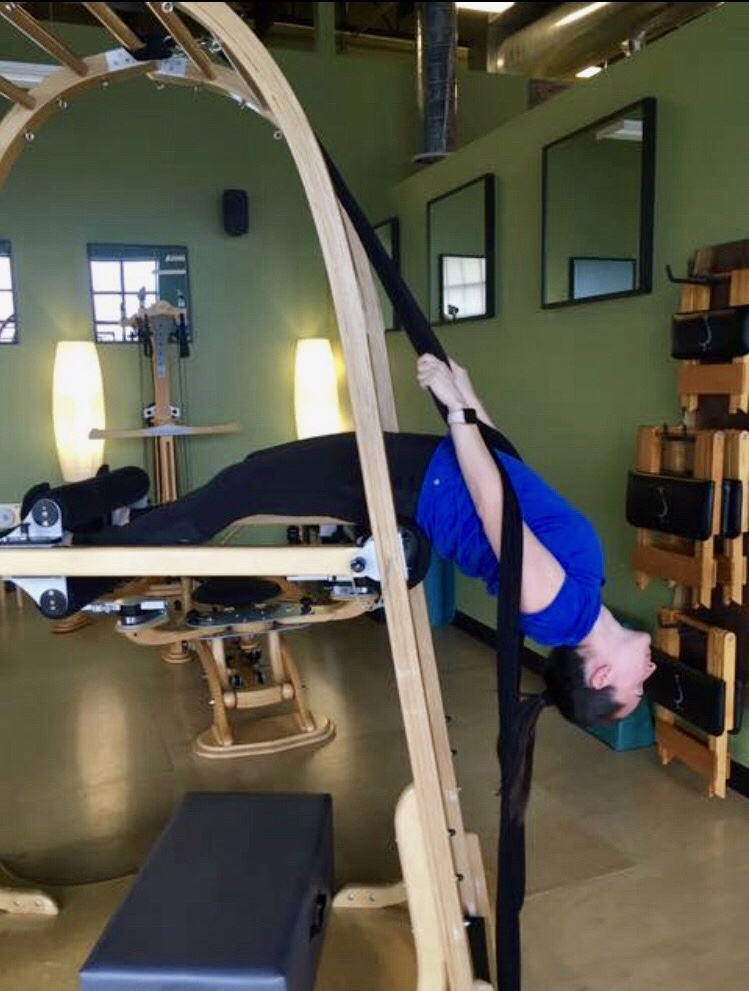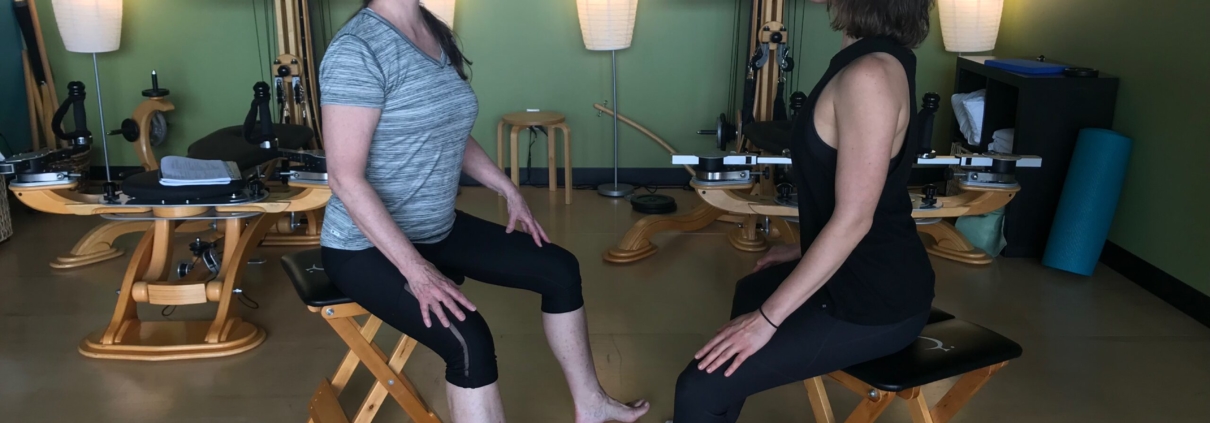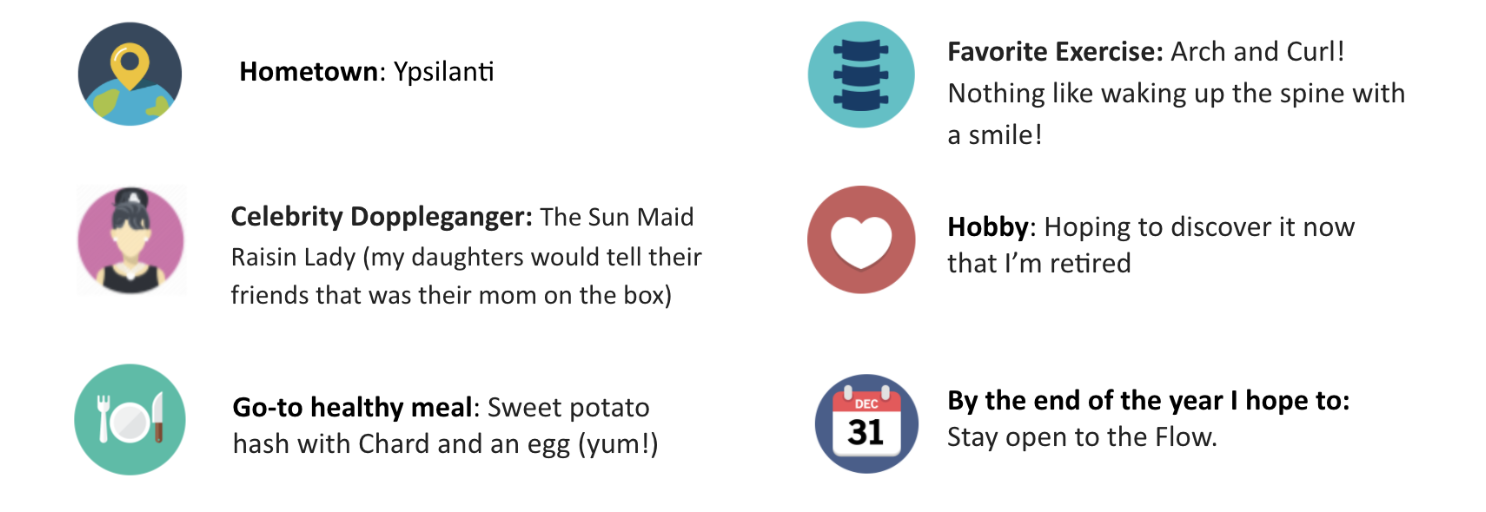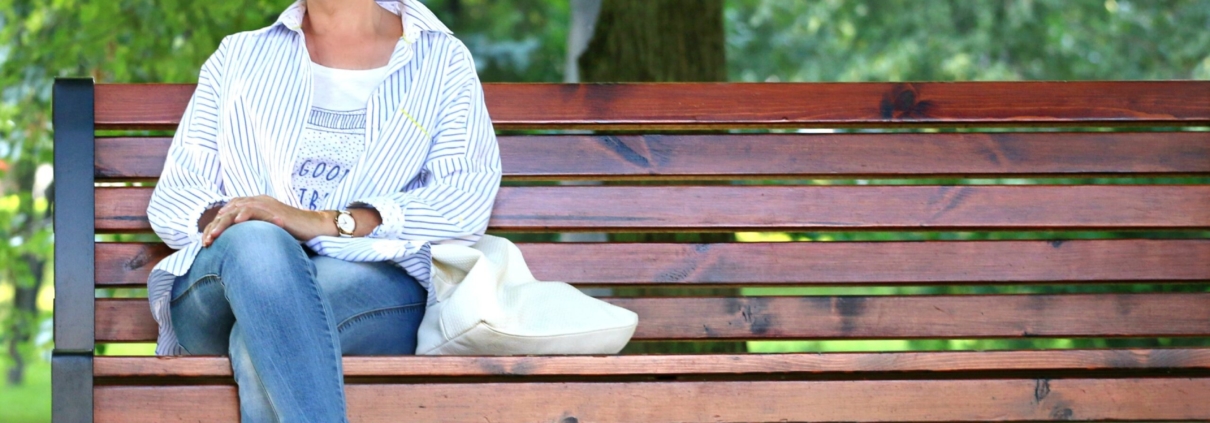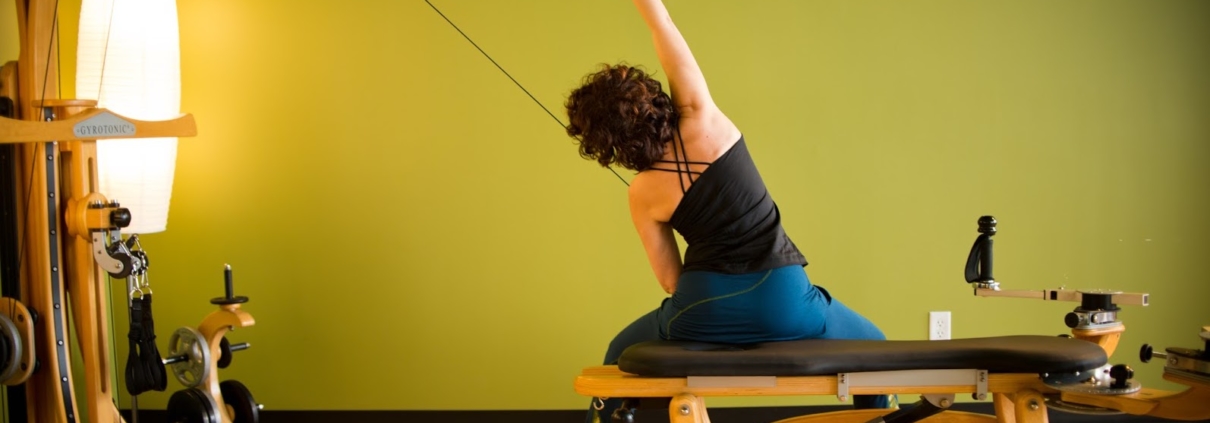Picture this: It’s a beautiful day and you are on a walk enjoying the fall foliage. You are walking with a companion, your dog, your (grand)children, or maybe enjoying some quiet alone time. Suddenly your companion slips and grabs onto your arm. Or maybe your dog pulls forcefully on the leash to chase after a squirrel. One of the children suddenly refuses to walk any farther and insists on being carried. Or, maybe you don’t see the uneven terrain ahead, misjudge your step, and lose your balance. We’ve all experienced situations where just the acts of daily life can lead to unexpected results in our body. Functional training can help prepare us for these moments.
Functional training is targeted movement that works the body and muscle groups in ways that support the activities of daily life to help you feel better as you move through your day and reduce risk of injury. Both Pilates and GYROTONIC® exercises can be used as functional training for a variety of lifestyles and functional fitness goals.
For most people, training the body to meet the activities of daily life means making sure that you move your spine in all of its planes of motion every day so that the small muscles that stabilize the spine stay active. Even gentle spinal motions like cat stretches and easy rotations like side lying spinal rotation and arm circles that bring you into a bit of spinal extension can help you maintain the mobility necessary for everyday movements. Exercises like squats, single leg lifts and side leg lifts will keep the lower body kinetic chain active and strong.
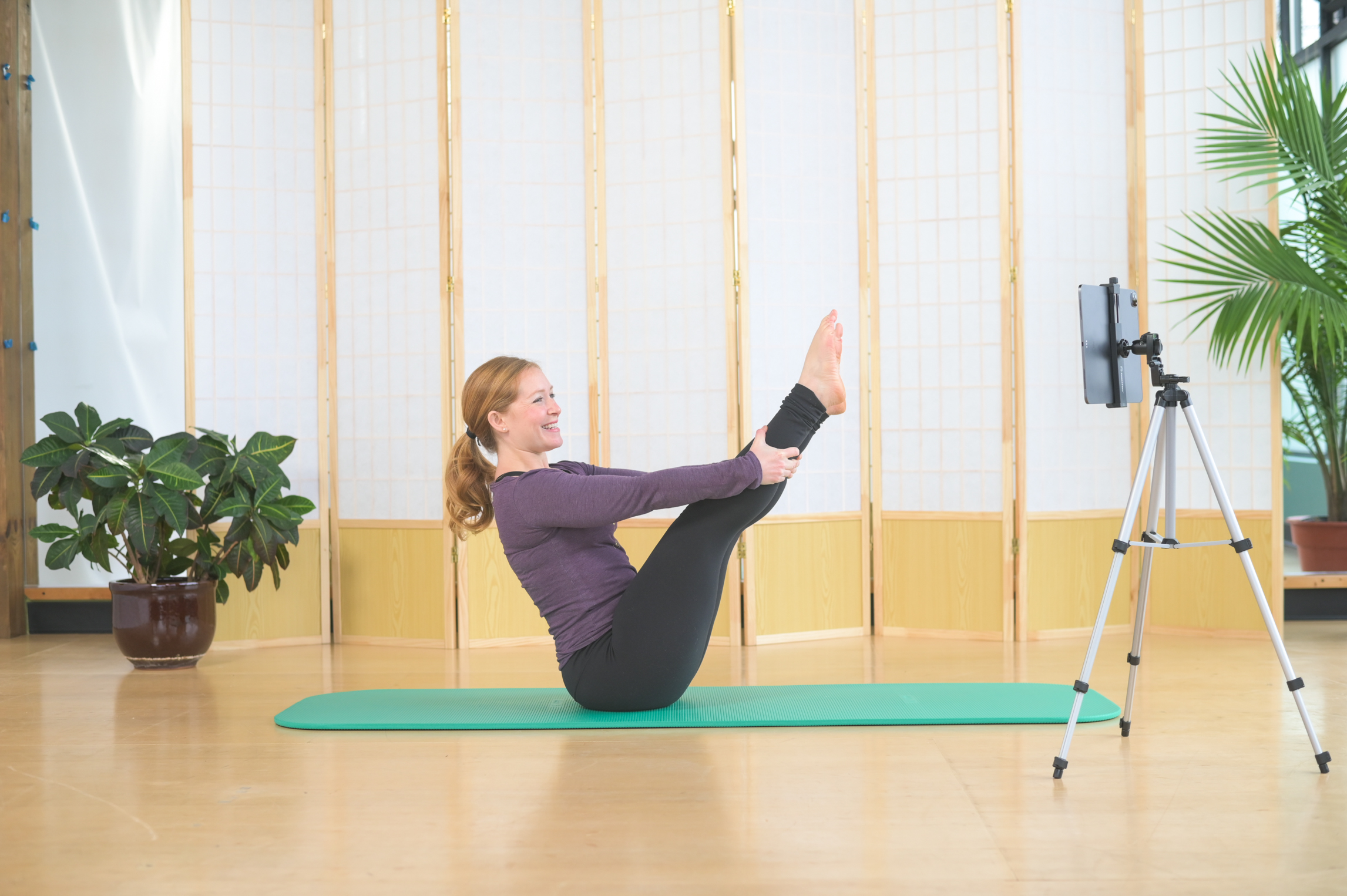
Pilates and GYROTONIC® exercise as functional training
When life throws you these curveballs, how does your body respond to these changes in demand? Does your companion pull you down with them and you both get banged up, or are you able to provide a steady arm to help them regain their footing? Does your dog pulling cause you to suddenly twist and strain a muscle in your back, or is your body able to adjust to the change of directions with healthy spinal rotation? Are you able to carry a child without causing your shoulders to go on strike the next day?
As a Pilates and GYROTONIC® trainer, I want to partner with my clients to help them to move pain-free through daily life and give their body strength and resources adapt to unexpected movement loads. Each of our movement loads and physical requirements is going to be unique.
For example, as a mom with small children, I need my body to be able to keep up with my busy four-year-old, but also be able to play on the floor with my infant. I also need to be able to hold babies in my arms for long periods of time and lift my children from varying surfaces or heights many times a day. My functional training goal is motherhood!
In this lifestyle scenario, Pilates helps me:
- Train and strengthen my deep core muscles that are also recovering from childbirth
- Ensure my glutes are firing to support my movements
- Keep the muscles of my shoulder strong, but mobile

Alongside the above goals, GYROTONIC® training helps me:
- Keep my spine mobile and articulating in all directions (kids wiggle unpredictably!)
- Lengthen my chest muscles to counteract all the hours I spend focused downward on babies
- Strengthen my erector spinae muscles that keep me upright and tall
What type of life are you training for? Is it a life that can react quickly and adapt to changes without causing injury? There are many stages of life that can be served by this approach to training. You may not have babies, but maybe you have a desk job that takes a toll on your body. Or you may spend a lot of time in a committed relationship with your laptop or cell phone. Maybe you love to work in your garden, or have the vacation of a lifetime coming up. Every life has movement challenges. You don’t need to be training for a half marathon to have a goal for your Pilates or GYROTONIC® practice.

Pilates and GYROTONIC® exercise are both effective functional training methods to support your life’s activities, whatever that may encompass. We hear messages often about how we are supposed to look, but if your body doesn’t allow you to live a joyous and active life, what’s the point? Training goes deeper than face value, and as a trainer I care more about helping you train your body to support YOU. It’s not about how you look it’s about how you MOVE.
You Can Start Now
MOVE Wellness has experienced trainers who can help you workout safely and effectively and provide accommodation for any injuries or nagging pains. Talk to your trainer about your personal goals for the movement that matters in your life so we can support you in achieving those goals. MOVE offers private training in-person or online as well as MOVE Livestream with interactive livestream group classes you can take from the comfort and privacy of your own home. In addition, MOVE On Demand offers programs and classes you can access whenever and wherever you want.
Call us today at 734-224-2560 to learn more or start now online to schedule in-studio. We also have a 14 day free trial of MOVE Livestream classes you can take advantage of.
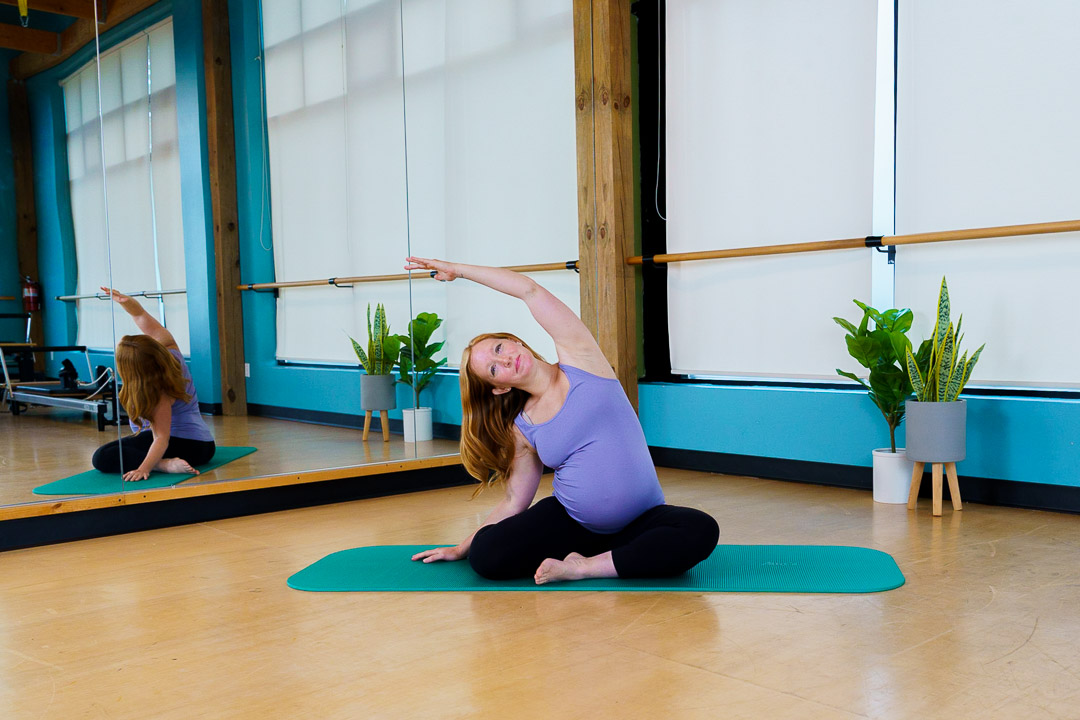
About the Author: Davy Darnton
Davy Darnton is a STOTT PILATES and GYROTONIC® trained instructor, who loves to challenge her clients and help them feel great in their bodies. She believes that we all have the power to heal our bodies through movement. Davy is Certified in STOTT Pilates Mat & Reformer work, Prenatal & Postnatal Pilates, Pilates for Diastasis Recti and is a GYROTONIC® Apprentice Trainer. Davy’s love of movement began at a young age when she first discovered gymnastics. Through her school years she was a competitive gymnast and gymnastics coach. During college Davy studied International Affairs at Ohio University and post college pursued development work as a Peace Corps Volunteer in Zambia. She is passionate about health prevention and education, women’s health, and holding space for healing to occur. Davy is returning to MOVE from maternity leave after welcoming her second child and works with clients of all ages and populations, including: post-rehab pilates, prenatal and postnatal pilates, chronic illness, cancer survivors, elder adults, athletes, runners, joint replacement, and anyone who has ever sat at a desk.
